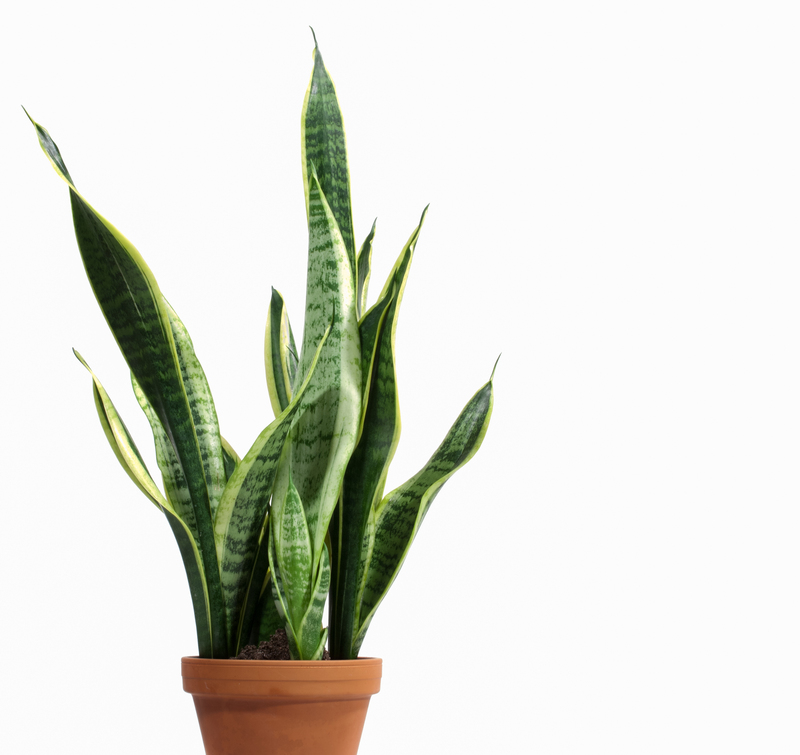Perfect Lawns Start Here: Key Care Secrets for First-Timers
Dreaming of a lush, green, and perfect lawn that turns heads and boosts your home's curb appeal? For many first-timers, the journey to a flawless yard can feel overwhelming. But don't worry--whether you are a new homeowner or simply taking pride in your outdoor space, our expert lawn care guide is here to make things simple.
This comprehensive article unveils the top lawn care secrets for beginners, ensuring your grass thrives season after season. Prepare to learn everything you need to cultivate the best lawn in the neighborhood, from soil preparation to mowing and pest control. Let's dig in and get your perfect lawn started--right here!
1. Understanding Your Lawn's Unique Needs
Know Your Grass Types
The first step to the lawn of your dreams is understanding what kind of grass you have (or want to plant). Different grass species have unique care requirements and optimal growing conditions.
- Cool-Season Grasses (e.g., Kentucky bluegrass, fescue, ryegrass): Thrive in cooler climates and stay green during spring and fall.
- Warm-Season Grasses (e.g., Bermuda, zoysia, St. Augustine): Best suited for hot and humid regions, staying vibrant in summer.
Knowing your grass type will help you tailor your watering, fertilizing, and mowing schedules for optimal lawn health.
Assessing Your Soil
Astonishingly, the foundation of any lush lawn is healthy soil. Test your soil before making any major changes. Consider:
- pH level (ideal is 6.0-7.0 for most lawns)
- Nutrient content (nitrogen, phosphorus, potassium)
- Soil structure (clay, sand, loam)
Soil test kits are affordable and available at garden centers. Based on the results, you can supplement your lawn with the nutrients it needs and correct any imbalances.

2. Preparing the Groundwork: Lawn Installation Basics
Seeding vs. Sodding
For first-timers, choosing between seeding and sodding is a crucial decision:
- Seeding: Cost-effective, wider variety of grass types, but requires patience and careful maintenance during establishment.
- Sodding: Instant results, less susceptible to erosion and weeds, but typically more expensive and may offer fewer grass variety options.
Evaluate your budget, timeline, and desired results before you start your perfect lawn journey.
Proper Lawn Preparation
Before laying sod or planting seed, follow these steps to prepare your yard for healthy, consistent grass growth:
- Clear the area of debris, old grass, and weeds.
- Loosen soil to a depth of 2-3 inches for good root growth.
- Incorporate organic compost to enrich soil health.
- Level the surface to prevent water pooling or runoff.
- Apply starter fertilizer--with a focus on phosphorus--for root establishment.
Proper preparation makes a huge difference in establishing a perfect lawn from the start!
3. Watering Wisdom: Your Path to a Lush Lawn
How Much to Water
One of the top secrets for first-timers is understanding when and how much to water. Overwatering can cause disease, while underwatering weakens grass and encourages weeds:
- On average, lawns need 1-1.5 inches of water per week (including rainfall).
- Water less frequently, but more deeply (2-3 times per week).
- Early morning is the best time to water, reducing evaporation and disease risk.
Use empty tuna cans or a rain gauge to measure how much water your lawn is getting per session.
Efficient Irrigation Techniques
For a truly lush green lawn, utilize efficient watering methods:
- Install a programmable sprinkler system for consistency.
- Use soaker hoses for targeted, deep watering.
- Adjust watering schedules based on weather, season, and soil drainage.
Pro tip: Avoid night watering, which can promote fungal issues!
4. Mowing Mastery: Cut Grass the Right Way
The Ideal Cutting Height
Mowing might seem straightforward, but proper mowing is key to a perfect lawn:
- Never remove more than 1/3 of the grass blade at a time.
- Cool-season grasses: keep at 2.5-3.5 inches.
- Warm-season grasses: maintain at 1-2 inches.
A higher mowing height encourages deeper roots, shades out weeds, and helps retain soil moisture.
Maintain Sharp Blades
Always mow with sharp blades. Dull blades tear the grass, resulting in brown, ragged tips and increased disease risk. Clean your mower regularly and sharpen blades every season or after every 10-12 mowings.
Mowing Patterns and Frequency
Vary your mowing pattern to promote upright growth and reduce soil compaction. During peak growing season, mow weekly. In hot or dry weather, reduce frequency to avoid stressing the grass.
5. Fertilization Fundamentals
Choosing the Right Fertilizer
To grow a truly lush, perfect lawn, you'll need to feed it with the right nutrients. Fertilizers come in many forms:
- Granular (slow or fast release)
- Liquid fertilizers
- Organic options (compost, manure, fish emulsion)
Choose a fertilizer with a good balance of nitrogen (N), phosphorus (P), and potassium (K), matched to your soil test results. Organic fertilizers are ideal for improving long-term soil health.
When and How to Apply Fertilizer
- Fertilize cool-season grasses in spring and early fall.
- Fertilize warm-season grasses in late spring through summer.
- Always water after fertilizing to activate nutrients and prevent burning your grass.
- Avoid over-fertilization, which can cause quick growth, weak roots, and environmental harm.
Adhering to the right schedule and rates will help your grass strengthen its roots and stay vibrant all season long.
6. Weed & Pest Control: Keeping the Enemies at Bay
Weed Prevention Tactics
Weeds are one of the biggest threats for first-time lawn owners. The best defense is a thick, healthy lawn, but consider these options:
- Hand-pull weeds while small, roots and all.
- Apply a pre-emergent herbicide in early spring to stop weed seeds from sprouting.
- Spot-treat visible weeds with post-emergent products as needed.
- Mulch among garden beds and borders to prevent weed encroachment.
Crowd out weeds by overseeding bare spots--healthy, dense grass is your best weed deterrent!
Treating Common Lawn Pests
Insects such as grubs, chinch bugs, and sod webworms can sabotage your quest for the perfect lawn. Look for signs like brown patches, thinning grass, or visible insect presence:
- Encourage natural predators (birds, beneficial nematodes).
- Use targeted insecticides sparingly, only when infestations are confirmed.
- Keep your lawn healthy--strong turf naturally resists most pests.
7. Aeration & Dethatching--Secret Weapons for Lawn Success
Why Lawn Aeration Matters
Aeration relieves compaction and allows air, water, and nutrients to reach roots more effectively. For most lawns, annual core aeration in early fall (cool-season) or late spring (warm-season) keeps the soil healthy and encourages lush growth.
Understanding Thatch and When to Dethatch
Thatch is a build-up of dead grass and roots on the soil surface. Excess thatch (over 1/2 inch) prevents water and nutrients from penetrating. Dethatch using a rake or specialized machine to keep your lawn in optimal condition.
8. Seasonal Lawn Care Tips for Beginners
Different seasons require different lawn care strategies. Here's a quick guide:
- Spring: Rake debris, aerate, fertilize, and overseed thin areas.
- Summer: Raise mowing height, monitor water needs, and watch for pests.
- Autumn: Fertilize (cool-season grass), overseed, and remove fallen leaves.
- Winter: Minimize foot traffic and keep lawn debris-free.
Adapting your routine to each season is a game-changer in maintaining a thriving, green lawn all year long.
9. Common First-Timer Mistakes to Avoid
Learning from others is the best way to fast-track your lawn care journey. Here are the most common mistakes beginners make--and how you can avoid them:
- Overwatering: Leads to shallow roots and increases disease risk.
- Improper Mowing: Cutting too short or infrequently stresses the grass.
- Too Much Fertilizer: Burnt grass and pollution--less is often more!
- Ignoring Soil Health: Skipping soil tests results in poor performance and wasted effort.
- Neglecting Edges and Borders: Pay attention to lawn edges for cleaner, well-defined results.
Avoid these pitfalls to maximize your chances of a beautiful, perfect lawn right from the start!

10. Building Good Lawn Habits for Lasting Results
Developing a consistent lawn maintenance routine is your best secret weapon for success. Consider these simple habits:
- Walk your lawn weekly to spot issues early.
- Keep a basic lawn care calendar.
- Don't skip regular maintenance just because your lawn looks good--it's easier to prevent problems than fix them.
- Monitor changes in growth, color, and soil moisture throughout the year.
Lawn care is an ongoing process, and regular attention will keep your investment looking its best year after year.
Conclusion: Start Your Journey to a Perfect Lawn Today
Achieving a perfect, lush, and green lawn doesn't happen overnight--but with these essential lawn care secrets for first-timers, you're well-equipped for the journey. Remember:
- Understand your grass and soil
- Prepare the ground and water wisely
- Master mowing and fertilization basics
- Stay ahead of weeds, pests, and seasonal challenges
With patience and a little hands-on care, your yard will soon be the envy of the neighborhood. Your perfect lawn starts here; pick up your rake, fire up your mower, and watch your dream lawn come to life!
Start your lawn care adventure today, and transform your first-time efforts into a beautiful, thriving landscape for years to come.